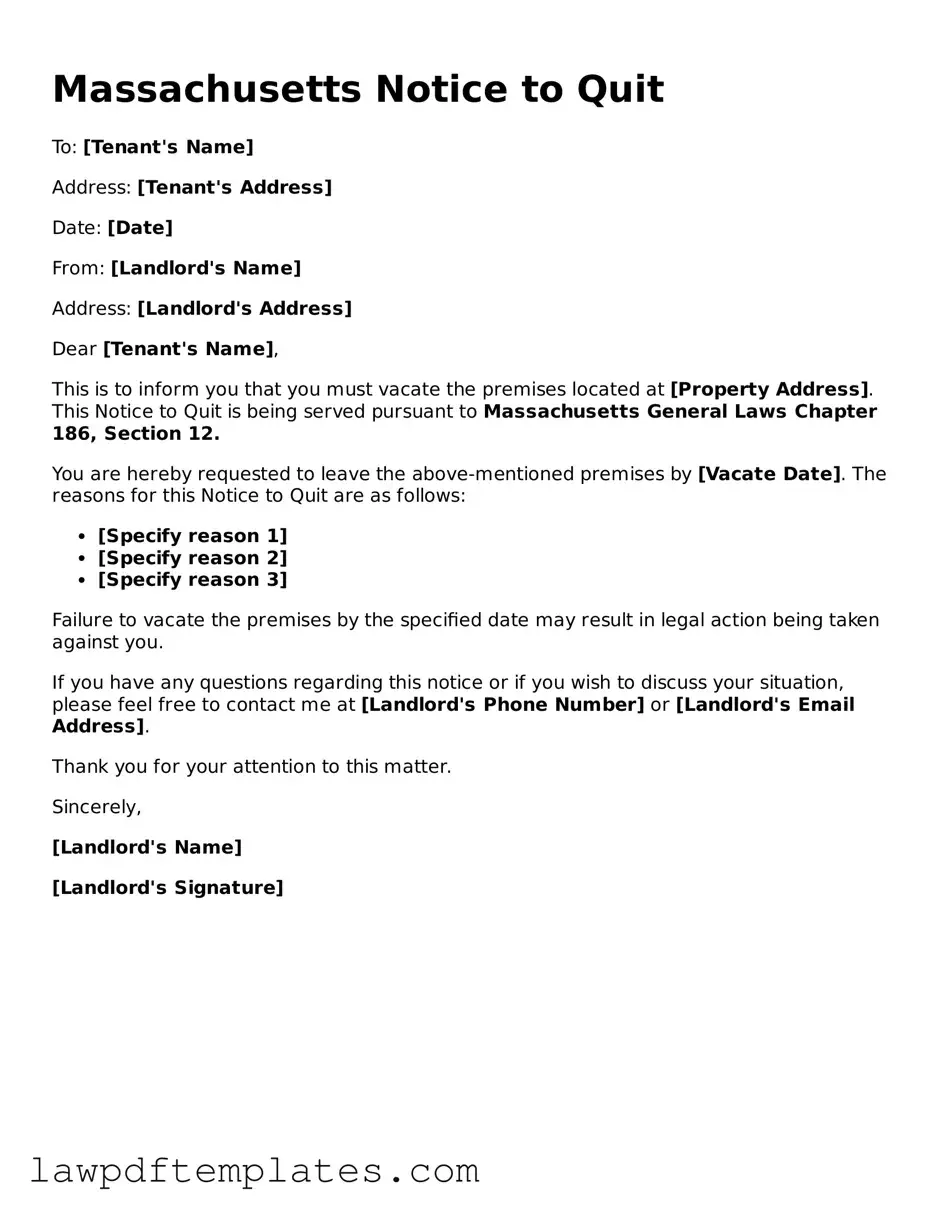Free Notice to Quit Template for the State of Massachusetts
The Massachusetts Notice to Quit form is a legal document that a landlord uses to inform a tenant that they must vacate the rental property. This notice is an essential step in the eviction process, outlining the reasons for termination of the lease. Understanding how to properly fill out this form is crucial for both landlords and tenants alike.
Ready to fill out the Notice to Quit form? Click the button below to get started!
Get My Notice to Quit
